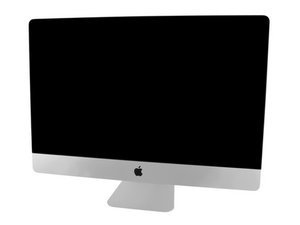È chiaro che Fusion Drive è costituito da due unità indipendenti, un disco rigido SATA e un SSD PCIe blade. La dimensione del set di unità Fusion è l'unità SATA bade, quindi se si dispone di un HDD da 1 TB è la dimensione dell'unità Fusion poiché l'SSD viene utilizzato come cache di tale unità. Questo è uno dei motivi per cui Apple utilizza un SSD più piccolo (24 GB> 128 GB a seconda delle dimensioni dell'HDD e della generazione dei sistemi).
OK quindi quali sono le tue opzioni?
Se si dispone di un sistema Fusion Drive, l'aggiornamento dell'HDD a un HDD più grande può essere fatto, ma l'efficienza del Fusion Drive sarà limitata dal più piccolo SSD della configurazione originale. Fondamentalmente non vedrai molto miglioramento se non più spazio di archiviazione.
La sostituzione dell'HDD a un SSD SATA potrebbe essere eseguita, ma l'SSD della lama non potrà essere utilizzato poiché le sue dimensioni sono troppo piccole nel sistema, i suoi 32 GB, che sono appena abbastanza grandi da supportare il tuo MacOS senza spazio per V- RAM, memorizzazione nella cache o impaginazione. Quindi, in pratica, è una memoria inutile!
Quindi cosa consiglio?
Se volessi sia le prestazioni che l'archiviazione profonda, avrei rotto il set di Fusion Drive e aggiornato l'SSD PCIe blade su un SSD più grande, non utilizzando affatto un Fusion Drive!
Per i dilettanti professionisti e i professionisti di fascia bassa che eseguono molta musica o elaborazione di immagini o video, questo è ciò che raccomando. Vorrei andare con un 512 a molto piccolo se si stanno facendo piccole cose, la maggior parte delle persone ha bisogno di 1 TB o 2 TB di SSD per progetti più grandi e hanno abbastanza spazio per lo spazio zero.
Per essere chiari, fai in modo che Blade SSD sia l'unità di avvio che sfoggia il tuo sistema operativo e le tue app e nient'altro! Il resto dell'unità è vuoto per consentire al sistema di sfruttare V-RAM, cache e paging e, a seconda delle app utilizzate, è impostato come spazio di lavoro. Come minimo vuoi 1/3 del disco rimasto vuoto più è meglio se stai facendo grandi immagini, musica o video.
Ecco un buon riferimento su ciò che il tuo sistema può supportare The Ultimate Guide to Apple's SSD proprietari
Let’s be clear a Fusion Drive is made up of two independent drives a SATA HDD and a PCIe blade SSD. The size of the Fusion Drive set is the SATA drive so if you have a 1 TB HDD thats the size of the Fusion drive as the SSD is used as a cache of that drive. This is one reason Apple uses a smaller SSD (24 GB > 128 GB depending on the size of the HDD and the systems generation).
OK so what are your options?
If you have a Fusion Drive system upgrading the HDD to a larger HDD can be done but the efficiency of the Fusion Drive will be limited by the smaller SSD the original config had. Basically you won’t see much improvement other than more storage space.
Replacing the HDD to a SATA SSD could be done but the blade SSD will not be able to be used as its size is too small in your system its 32 GB which is just barely large enough to support your MacOS with not spare space for V-RAM, caching or paging. So basically it’s useless storage!
So what do I recommend?
If you wanted both performance and deep storage I would break the Fusion Drive set and upgrade the PCIe blade SSD to a larger SSD, not using a Fusion Drive at all!
For serious amateurs and low end pro’s that do a lot of music or image processing or video work this is what I recommend. I would go with a 512 being to very smallest if you are doing small stuff, most people need 1 TB or 2 TB of SSD for larger projects and have enough space for scratch space.
To be clear you make the Blade SSD as your boot drive sporting your OS and Apps and nothing else! The rest of the drive is left empty for the system to leverage for V-RAM, Cache & Paging and depending on the Apps being used set as the scratch space. As a minimum you want 1/3 of the drive left empty more is better if you are doing large images, music or vids.
Here’s a good reference on what your system can support The Ultimate Guide to Apple’s Proprietary SSDs


 1
1 
 329
329  970
970
1 Comment
Le tue specifiche di sistema 27" iMac 4.2 GHz i7 5K (Mid-2017)
Your systems specs 27" iMac 4.2 GHz i7 5K (Mid-2017)
by Dan